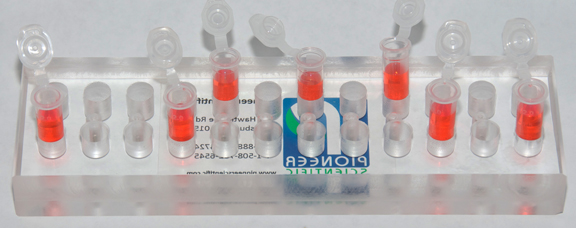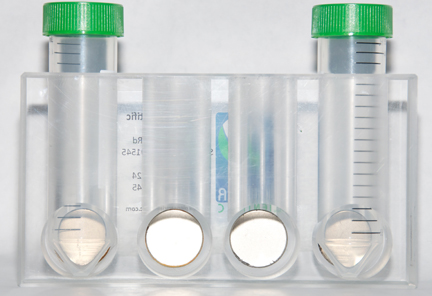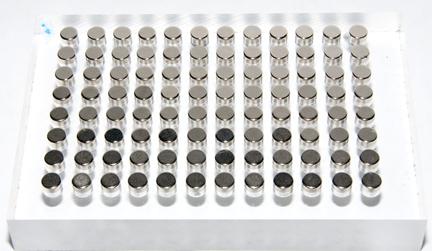Purifying DNA, RNA and protein molecules are at the heart of diagnostics and molecular biology companies. This involves moving or separating the target molecule such as DNA, RNA or protein efficiently from a complex mixture. Increasingly magnet based separation is employed for this purpose. Magnets allow movements. Large numbers of diagnostic companies have invested in the magnetic based separation technologies and have developed their own proprietary reagents for the magnetic separation platform. Companies such as Life Technologies, Promega, Takara Clontech are some of the companies offering magnetic particle based separation technology.
Size of the magnetic particles
In older technology, the magnetic particles was made of iron oxide, a soluble material that was protected through a thick polymer shell. As a result these particles were micrometer-sized particles. As the particle size increases, the binding capacity and efficiency of separation goes down. A newer technology of sub-100 nanometer sized particles is available on the market. One such product is Turbo Beads. They replaced the thick outer polymer shell with a very thin layer of grapheme. This thin layer of coating makes these magnetic particles sub-100 nm particles. Small particle size also provides increased surface area for molecules to bind, thereby increasing the extraction or purification capacity and efficiency.
Binding Strength
Older iron oxide based magnetic particles are a combination of iron, which is magnetic, and oxygen, which non-magnetic. Thereby the magnetic capacity of these particles is not as strong as pure magnetic particles. Some of the nano magnetic particles are made of pure magnetic particle, which makes their binding to the molecules very strong and lead to strong and efficient separation.
Because of this strong binding capacity, they are reliable over hundreds of cycles, in harsh and demanding environments or very viscous complex media. The affinity of binding also depends on highest quality of linker attachment. Some of the best magnetic particles have very strong reliable chemical bond binding the DNA, RNA and protein molecules to the magnetic beads.
Magnetic Seperation Stands.
The magnetic separation stands used to separate the molecules from the magnetic beads are equally important. You need well designed magnetic separation stands which with strong magnets to be able to bind the magnetic particles carrying DNA, RNA or protein for separation. This strong binding should also withstand harsh separation and washing buffers, and elution solutions and should be able to withstand multiple cycles, and perform very well. Pioneer Scientific magnetic stands offers magnetic stands with very strong magnets and perform very well. These include number options to accommodate varying volumes from small PCR tube volume to 50 ml tube volume. When considering the separation molecules based on magnetic beads, the quality of magnetic particles, and the magnetic separation stands are equally important.



